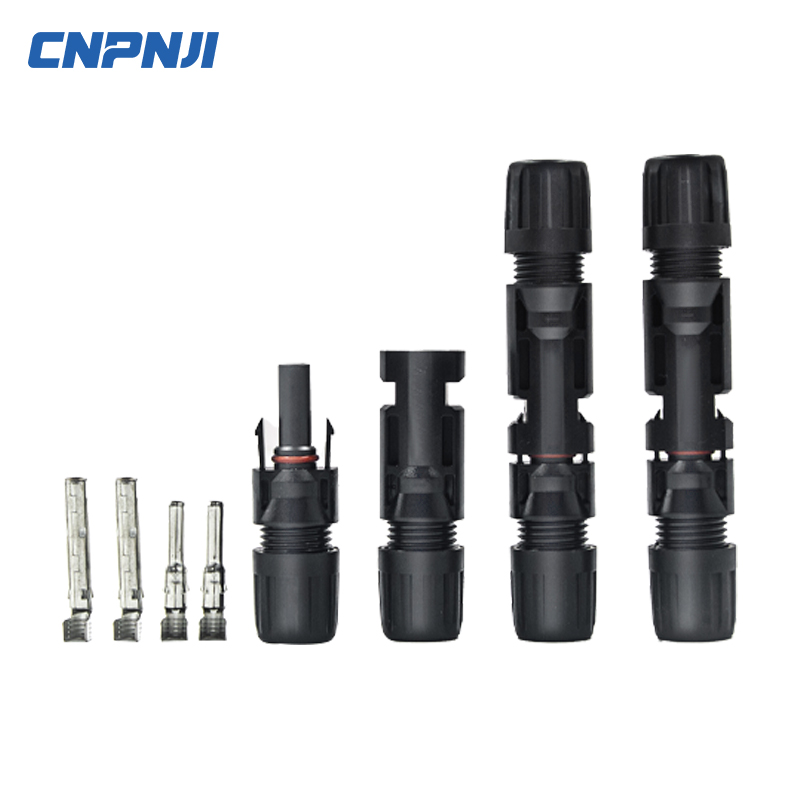Best Practices for Eliminating Solar PV Connector Failures
Solar PV connectors play a crucial role in the wiring of solar arrays. As designed, they provide high voltage, high current, low resistance DC connections if installed correctly, and their housings are waterproof, temperature resistant, UV resistant, and have a life expectancy of up to 25 years or more. In addition, their snap- together connection technology speeds installation of solar arrays. However, PV connectors are often the source of solar array failures.
A study by the Fraunhofer Institute for Solar Energy Systems ISE of Freiburg, Germany, examined the causes of thermal failures of PV arrays and found that solar PV connectors and crimps were the largest single cause of DC wiring failures. Most of these failures occurred during the first five years of installation, leading researchers to suspect poor installation practices as a primary cause.
Discussions here in the United States with electrical inspectors have also yielded the following insights into PV connector failures:
Several inspectors have also observed field installers crimping PV connectors’ contacts with pliers. Additional comments highlighted the “loose” fit of PV connectors of different manufacturers.
Compounding the array failures of solar PV connectors is that it can be difficult to see improper assembly and poor contact crimps. Connection failures are often hidden in connectors that appear to be making good contact. Unless the connector is completely faulty, such as a deformed or melted connector, it is almost impossible to detect with the naked eye. Thermal imaging is often the only way to detect these problems. The energy loss, diagnosis and repair costs associated with these hidden failures can be high.

Solar PV connector failures can be categorized into two areas: incompatibility issues and connector wiring problems. Factory-installed connectors on the back of PV modules are usually not the primary source of problems, and most of these failures are related to field wiring. However, field-installed connectors such as those for home-run string end cabling used with string and other central inverters can be problematic.
Incompatibility issues are often caused by the mating of photovoltaic connectors from different manufacturers. While many connectors are considered “compatible,” there is no industry standard for a uniform connector design. Due to the differences in design tolerances, crimp tool requirements and contact and housing materials, optimal electrical connection cannot be guaranteed. In addition, while all PV connectors should be tested to UL 6703, this standard does not cover the mating of connectors from different manufacturers unless specifically tested — something rarely done. Some manufacturers caution against the mating of different connector brands, and the recommended practices should be followed.
Most solar PV connectors use crimp-style contacts. Whether factory- or field-installed, these connectors require the manufacturer-recommended crimp tool and proper assembly for a trouble-free installation. Crimp tool calibration requirements and crimp die limits must be adhered to for trouble-free installation over the lifetime of the solar array. New tool-less PV connectors are now available as well. These connectors eliminate the tooling and assembly requirement, they use a temperature- and vibration-resistant spring contact for wire connections.
The solution to the challenges of photovoltaic connector failures is to ensure the correct installation during the initial wiring of the PV array. Some best practices that can be used to accomplish this are:
In addition to the challenges of proper assembly of solar PV connectors, there is the issue of incompatible PV connector mating. Best practices in this area include always specifying the same brand of field connector as that supplied by the PV module manufacturer. This includes the use of microinverters and optimizers. Some of these manufacturers are making this easier in some cases by offering a choice of PV connector brands on their equipment.
The use of PV connectors from the same manufacturer, proper training, recommended crimp tools or the use of a tool-less spring contact PV connectors can help minimize the impact of connector failures.
